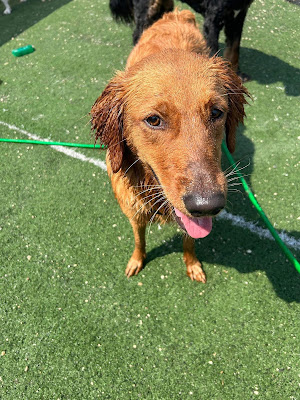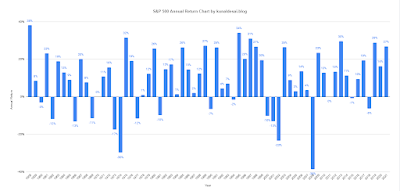It's been five weeks since the successful D-Day landings and while there is no way to know precisely what was happening on this day in history 80 years ago there is this from the memoirs of my pop, Howard Gaertner, who had been dodging Germans in Normandy for several weeks already.
I had trained for a year with F Company, 311th Infantry Regiment,
78th Division at Camp Butner, North Carolina. My training was
basically as an infantryman. However, after basic I was assigned to our
weapons platoon, .30 caliber air cooled machine guns and 60mm mortars.
Eventually I became a gunner for the 60mm mortar, setting-up, aiming
and determining the needed charge for the target.
 |
| First furlough - August 1943 |
However, when I arrived at the replacement depot in Normandy, the
powers that be assigned me to M Company, 47th Infantry Regiment, 9th
Infantry Division. M Company was a heavy weapons company, .30 caliber
water cooled machine guns and 81 mm mortars. While more familiar with
mortar, I was assigned to a machine gun squad. Our mission was to
support an attack by the lead rifle company and provide offensive fire
power, also to provide defensive power. The assignment to a .30 caliber
water cooled heavy machine gun was no big deal. The air cooled model's
fire power was somewhat restricted because of the heat generated as
versus water cooled. Needless to say our squad chose not to carry the
water can needed for our weapon. Rather, we chose to carry extra ammo.
Should push come to shove for need of water our urine was generally
available.
 |
| Photo - Histomil.com |
My days with M Company began shortly after the 9th had taken
Cherbourg. Perhaps four or five other replacements and I moved to the
front around twilight. All assigned to machine gun sections, we found
vacant slit trenches along a hedgerow ready for our occupancy. On the
other side of the foliage was a sunken road harboring a tank destroyer.
 |
| La Caplainerie - liberated by 3rd Battalion, 47th Infantry in the battle of the hedgerows |
Shortly after settling down in our slit trenches we came under heavy artillery barrages; mostly 88’s. The
replacement in the slit trench to my rear leaped from his trench and
pounced on my back. He was shouting incoherently - Save me! Save
me! Save me! I told him - Knock it off. Get back in your trench and if
you know how to pray you might give it a try.
I only met this fellow the day before in the repo depot. He was
foul-mouthed and a first class braggadocio. Within days our squad
noticed he had a hankering for the juice; calvados and cognac. He was
not the type of soldier you wished as a member of your squad. Some time
in August he just disappeared. He was not captured or wounded.
Consensus leaned towards AWOL.
 |
| Les Champs de Losque - liberated by 3rd Battalion, 47th Infantry in the battle of the hedgerows |
The barrage made us virtual prisoners and seemed to go on for a
day. The smell of exploding artillery, mortar and rocket shells
permeated the air. Rockets fired from the Nebelwerfer
were dubbed screaming meemies by the infantry. To make matters worse,
whenever the tank destroyer next door would turn-over its engine it
would draw more artillery fire.
 |
| Since Roman times the sunken roads between Norman hedgerows have remained unchanged but for some paving |
Within a couple of days we were given the order to attack. I
clearly remember a rather heated exchange that morning between a
supporting tank commander and our battalion CO. The tanker wanted us to
lead the way across the open field to the next hedgerow. He said
something about his tanks being vulnerable once they cleared their
existing cover. Lt. Colonel Don Clayman threatened the tanker with
disciplinary action. Given the provocation that’s probably the least dangerous thing he could have done.
For weeks it was one hedgerow at a time. Casualties were
mounting and progress extremely slow and limited. Our sergeant, Bill
Underwood, was killed.
 |
Sunken road, July 1944 - US Army |
During this period we were served but one warm meal when we went into reserve for a couple of days.
Rumor had it that there was going to be a big push shortly and
the stalemate in Normandy may be coming to an end. We didn’t know that
we would be part of the Saint-Lô offensive until it happened.
Jill and I spent a day navigating the Bocage (Norman hedgerows and
sunken roads) that my father and his comrades fought their advance. We
passed through dozens of small hamlets and villages that The Raiders
of the 3rd Battalion, 47th Infantry, 9th Division liberated. Many of
them mere crossroads or a simple bridgehead. The larger towns had a
church and a café. It gets very interesting when you are tooling-about
in your peppy, six-speed rented Opel Astra and you encounter a Norman
farmer with a Case tractor and a tank of liquefied manure meeting you
head-on in a sunken hedgerow. But I digress.
For weeks the invasion force was bottled-up on the Cotentin
(Cherbourg) Peninsula. The battle was a deadly, nasty and ferocious
slog. The rainy season had begun. An advance of three hundred yards
was considered a good day's progress. Troops and matériel from Britain
continued to build-up on the beachhead as the invasion was reinforced.
Something had to be done to break out of the bottleneck. That plan
would be named Operation Cobra.























































